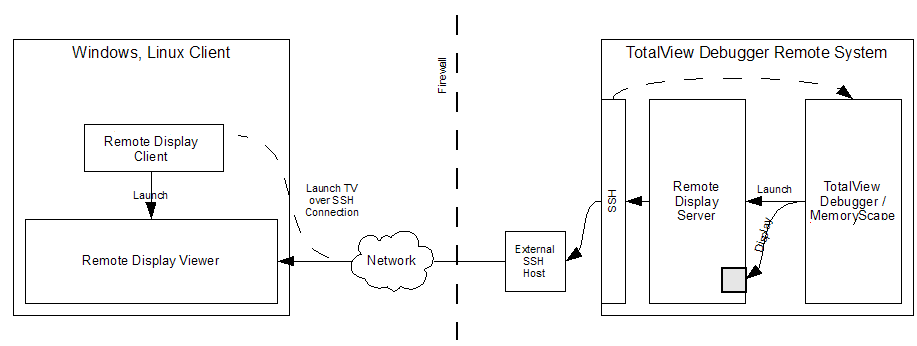Remote Display Components
TotalView Remote Display has three components:
Figure 16 shows how these components interact.
 |
In this figure, the two large boxes represent the computer upon which you execute the Client and the remote system upon which TotalView runs. Notice where the Client, Viewer, and Server are located. The small box labeled External SSH Host is the gateway machine inside your network. The Client may be either inside our outside your firewall. This figure also shows that the Server is created by TotalView or MemoryScape as it is contained within these programs and is created after the Client sends a message to TotalView or MemoryScape.
TotalView and the X Window system must be installed on the remote server machine containing the rgb and font files in order for the remote display server to start correctly. The bastion nodes (if any) between the remote client machine and remote server machine do not require TotalView or X Window file access.





